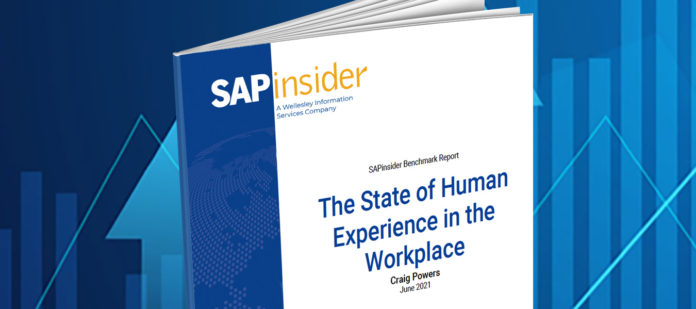Employers are seeking new ways to engage with both existing workers and potential recruits as the COVID-19 pandemic has amplified the importance of employee experience, itself a growing topic for years now.
This is from The State of Human Experience in the Workplace report, a joint effort among WorkForce Software, IBM, eightfold.ai and SAPinsider. SAPinsider surveyed 111 members of its community in May and June 2021.
When asked, “What Drives Employee Experience Strategy?” more than half (54%) of survey respondents said that an increase in remote work caused by the pandemic was their largest driver of employee experience strategy.
This was followed by major organizational change (31%), increased competition for talent (27%), and higher employee turnover rate (25%).
When it comes to addressing these employee experience drivers, many companies say that optimising self-service to make employee and work data more accessible is their lead action (61%) while investing in technology to improve worker productivity is a tactic utilised by 59%.
Also, 54% of respondents say creating spaces and processes to increase collaboration between employees and teams is one of their main focuses. Additionally, nearly 50% of respondents are adding or improving employee feedback or surveys to capture their employees’ sentiment, so they can better react in the moment and increase employee satisfaction.
These top tactics all involve technology and indicate a need for software solutions that will enable self-service, create collaboration spaces — particularly remotely — and better capture sentiment through in-the-moment surveys.
However, the survey found that not many companies have actually implemented the software they need. Just over one-third (35%) of respondents are currently using or implementing workforce management solutions (WFM), and over half are either planning to implement WFM in the next 24 months or are aware of the need for WFM.
Companies are even further behind with offering their employees end-to-end employee experience solutions — less than 2% of survey respondents currently use them. However, 72% of those surveyed are planning to implement end-to-end employee experience solutions in the next 24 months or are currently evaluating them.
“This past year has shown us that businesses that can pivot and be flexible and attentive to their employees’ changing needs will gain a competitive edge and opportunity to thrive,” said Alan Winegar, chief services officer at WorkForce Software.
“Investing in business operations that have a direct positive impact on your employees’ day-to-day work experience also have an impact on your customers’ increased satisfaction too,” said Winegar.
















